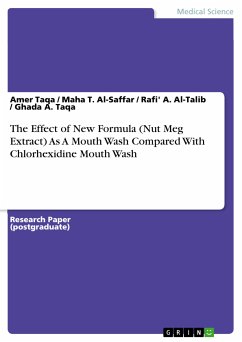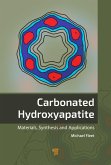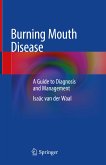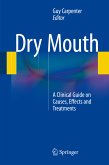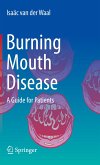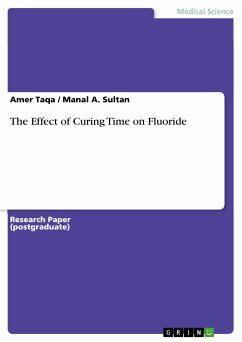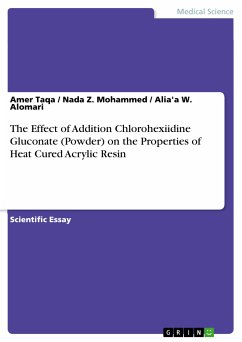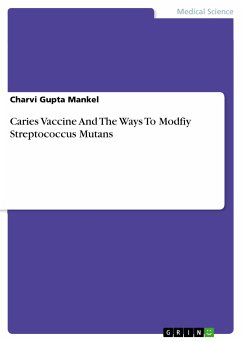Research Paper (postgraduate) from the year 2007 in the subject Medicine - Dentistry, grade: none, University of Mosul (Dental college), language: English, abstract: Aims: To compare the anti-plaque and anti-inflammatory effects of new mouth rinse (nut meg) to the conventional chlorhexidine anti-inflammatory and anti-plaque effects (in vivo study). Materials and Methods: Sixteen dental students in the final year participated in this study (2 females and 14 males) aged 22-23 years (mean 22.5 years). A double blind study was carried out by measuring plaque index, modified gingival index and bleeding index pre-treatment and post-treatment with the two mouth rinses (nut meg and chlorhexidine). The same volunteers were participated in the two test periods and each period lasted 5 days with a wash out twice daily. Deterioration rate for each parameter was derived and used ass a unit of analysis. Results: The new mouth rinse (nut meg extract) had a significant anti-plaque and anti-inflammatory effects (measured by reduction in bleeding index), which was nearly equivalent to the anti-plaque and anti-inflammatory effects of chlorhexidine. No significant difference was noticed between post-treatment group (p > 0.05) of the two mouth rinses regarding plaque and bleeding indices. Conclusion: The nut meg extract mouth rinse had anti-inflammatory effect which encourage its use in dentistry as a new mouth rinse for the treatment of gingivitis. Key Words: Nut meg, herbal extract, anti-inflammatory effect.
Dieser Download kann aus rechtlichen Gründen nur mit Rechnungsadresse in A, B, BG, CY, CZ, D, DK, EW, E, FIN, F, GR, HR, H, IRL, I, LT, L, LR, M, NL, PL, P, R, S, SLO, SK ausgeliefert werden.

